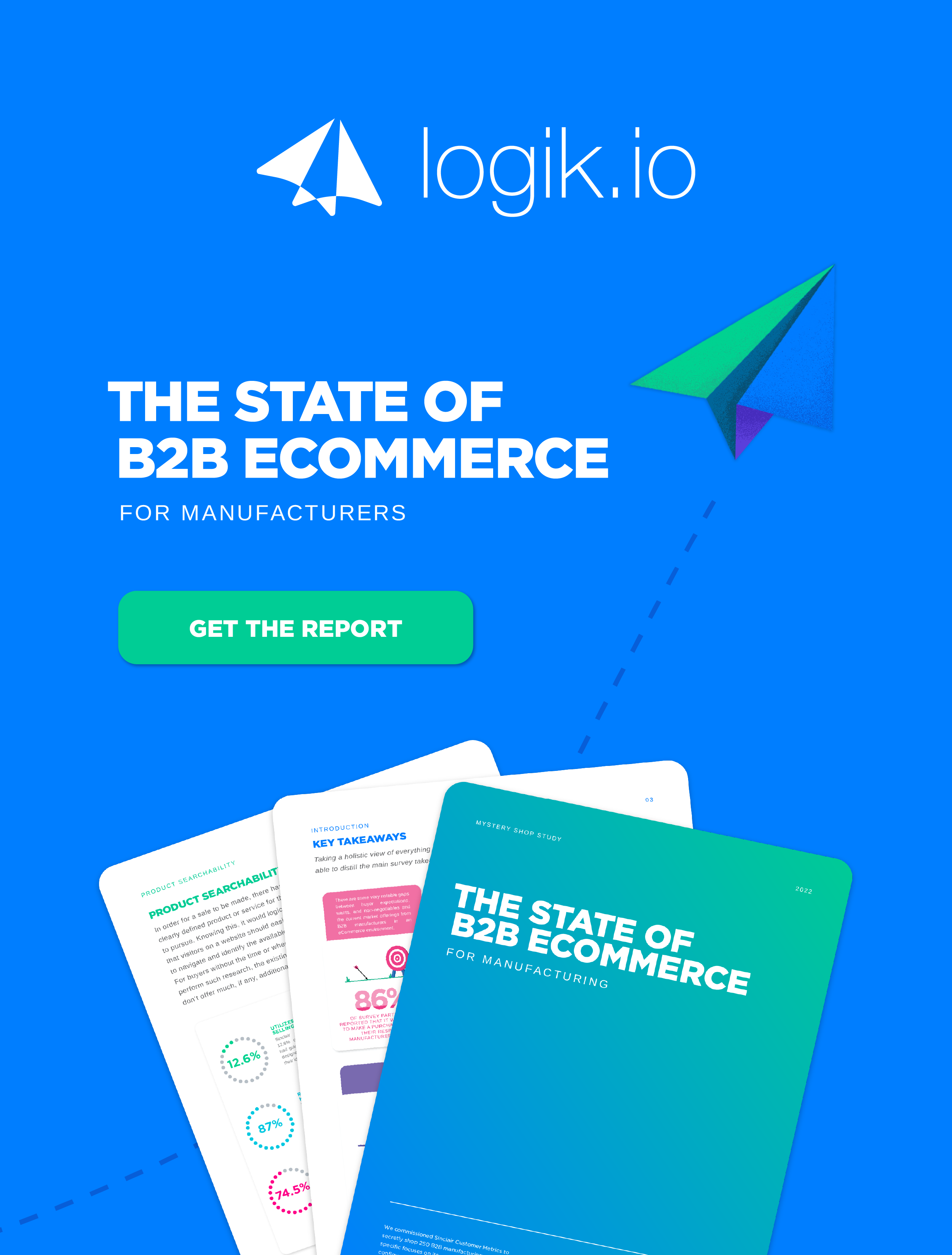If there’s one thing on the communal mind of businesses right now, it’s customer experience. More and more, an engaging customer experience is proving to be vital to the success of any company, particularly those that operate in eCommerce or omnichannel environments.
With such a saturated market, buyers are not wanting for choice – in fact, they have more options at their immediate disposal now than ever. This means they can be as discerning as they’d like when it comes to expectations, and only patronize those businesses that truly meet their standards.
Buyers are in the driver’s seat, and they know it.
This leaves businesses facing a higher-than-ever amount of pressure to create a personalized, intelligent customer experience that legitimately earns the patronage of their clientele.
So, how can you accommodate a new wave of buyers with expectations and personas unlike what’s been seen before? It may not be as hard as you think, if you follow two simple steps.
First, take time to truly understand the new, “consumerized” buyer and their preferences.
Then, leverage software like our Commerce Logic Engine to incorporate what we’ve identified as the three most important elements to a remarkable customer experience: accessible pricing, dynamic configurators and guided selling techniques.
If you can nail down those three key areas of customer experience, you’ll be in prime position to start selling more, selling faster and maintaining less – the Logik.io way.
Consumerized Buyers
Since buyers are the main drivers behind this market shift, they’re more than worth taking some time to understand. As a whole, buyers experienced a forced shift toward eCommerce experiences a few years ago as a result of suspended in-person sales operations. With fewer brick and mortar shops available, companies across all sectors had to utilize digital sales to keep their heads above water while riding out the COVID-19 pandemic measures.
Thus, we saw a boom in eCommerce and the new emergence of B2B manufacturers in the space. As buyers began to explore this newly expanded environment, they brought with them expectations from B2C environments – they wanted the same ease of navigation, speed of processing, options for customization and as little contact with sales reps as possible.
We commissioned an independent report from Sinclair Customer Metrics to fully assess the state of eCommerce for B2B manufacturers to see if they’re meeting these standards. Find our results and analysis in our free, downloadable report at https://learn.logik.io/state-of-b2b-ecommerce.
And while these preferences may have been born of circumstances that have since subsided, they are here to stay. Buyers have shifted into a lane that makes their life easier on a large scale – why would they go back to humoring businesses with out-of-date websites, unclear inventory, or impersonal experiences?
Instead, it is now the time for attuned businesses to rise to the occasion, and ensure, at the very least, the following three elements:
Pricing & Submitting Orders
At the top of our list of customer experience must-haves, accessible pricing and ordering capacities have surprisingly proven to be a hard find. While some designers may think withholding pricing or submission information is a catalyst for interested buyers to reach out for more detail, it’s really just an annoyance.
PwC reports that 86% of familiar buyers prefer to reorder directly through a website, specifically without having to engage directly with a sales rep.
This indicates that, even if your business is trustworthy enough to gain repeat clientele, they still don’t want to have to deal with one of your team members to get their order. For new buyers who have yet to go through a full encounter and garner that trust, the pull to pick up the phone just to get started is even lower.
B2C environments have trained buyers to expect a one-stop shop for finding, assessing, and ordering an item on their own – really, a microcosm of the Configure, Price, Quote process we’re so familiar with.
When a B2B or other site strays from that formula, it raises customer heckles and pushes them toward the 19.4% of websites that were determined to have an easy buy process. For every five eCommerce sites shopped, only one actually allowed buyers to submit their order directly, subverting the intended purpose of digital commerce entirely.
Dynamic Configuration
Arguably the most “consumerized” aspect of the new buyer persona is a desire for dynamic configuration options. Off the rack and out of the box options simply don’t have as much appeal for customers who believe custom is a must.
Sinclair Customer Metrics found that just under 20% of manufacturing sites even had a configurator available for engagement, though the products themselves were highly configurable across the board.
Within that small range, a third of shoppers found it difficult or very difficult to correctly configure their choices with what was actually available to them.
Headless configurators can help ramp up the “C” of CPQ here, with their capacity for visitor data collection helping to craft the most unique shopping experience possible. And, as buyers are placed in front of the correct starting points based on that data, they can then cater to their own needs with real-time modifications.
Dynamic configurators are best supported with visualizers that actually show how a buyer’s customizations are influencing their overall order and the final price.
3D configuration visualizers like our very own partner Threekit can link with your tech stack to help make this a reality for you and your buyers.
Hear more about why ignoring visual commerce options like Threekit puts you at the bottom of the totem pole from CEO Matt Gorniak in our Logik Talks clip below.
Guided Selling
Introducing guided selling into your sales environment can help mimic all the best parts of traditional sales conversations without actually incorporating a sales rep. We’ve taken a look at guided selling on the Logik.io blog before, highlighting the ways in which its presence can help you maximize your sales. It helps strike a happy medium for your sales team, website administrators, and clientele.
Think about it – consumerized buyers want things made easy on them. That means they don’t want to spend time researching your product or bundle options before visiting your website, and they don’t want to play telephone with another party in hopes they’ll land on the right item.
On the back end, you don’t want to have sales reps tied up in lengthy, winding conversations or build out environments that will have your IT team constantly in the weeds. You’ll want something easy to adopt, but just as easy to customize, with a set-and-forget structure. Here is where guided selling makes its grand entrance.
Guided selling relies upon pre-populated logic, unique to your specifications, and interactive questionnaires, surveys, and selection maps to help buyers parse through your catalog. They reap the full benefits of your internal knowledge while still maintaining control and agency within the experience.
There’s no denying the ultimate value of guided selling, but for one reason or another, it still hasn’t fully caught on. In our recent survey of B2B manufacturing websites, it was found that a mere 12% of businesses had any sort of guided selling presence. While that number looks – and is – low, it shows that there is still a massive, untapped market for those willing to take the leap and implement.
How Logik.io Can Help
Logik.io provides high performance headless configuration technology that alleviates the operational limitations of traditional configurators, streamlines complex selling processes, and enables omni-channel e-commerce sales for enterprise businesses. Purpose-built to complement and enhance Salesforce CPQ and eCommerce platforms, Logik.io delivers a headless solution with Lightspeed performance, a proprietary solving engine, and a simple and intuitive admin experience.
Logik.io is founded by a proven team with decades of experience in the CPQ space, and is backed by High Alpha and Salesforce Ventures. Learn more at www.logik.io/product.


%20FY25%20Logik.io%20Brand%20Elements/Brand%20Illustrations/%5BFY25%5D%20Logik.io%20Brand%20Illustration%20-%20Solving%20the%20Puzzle.png)